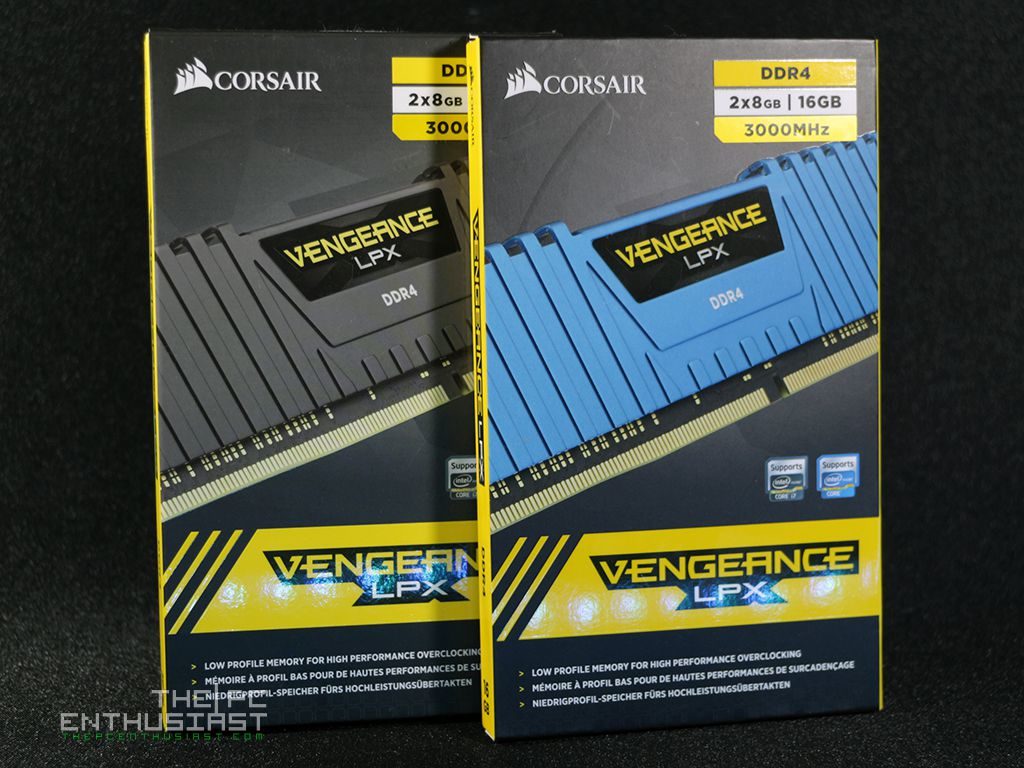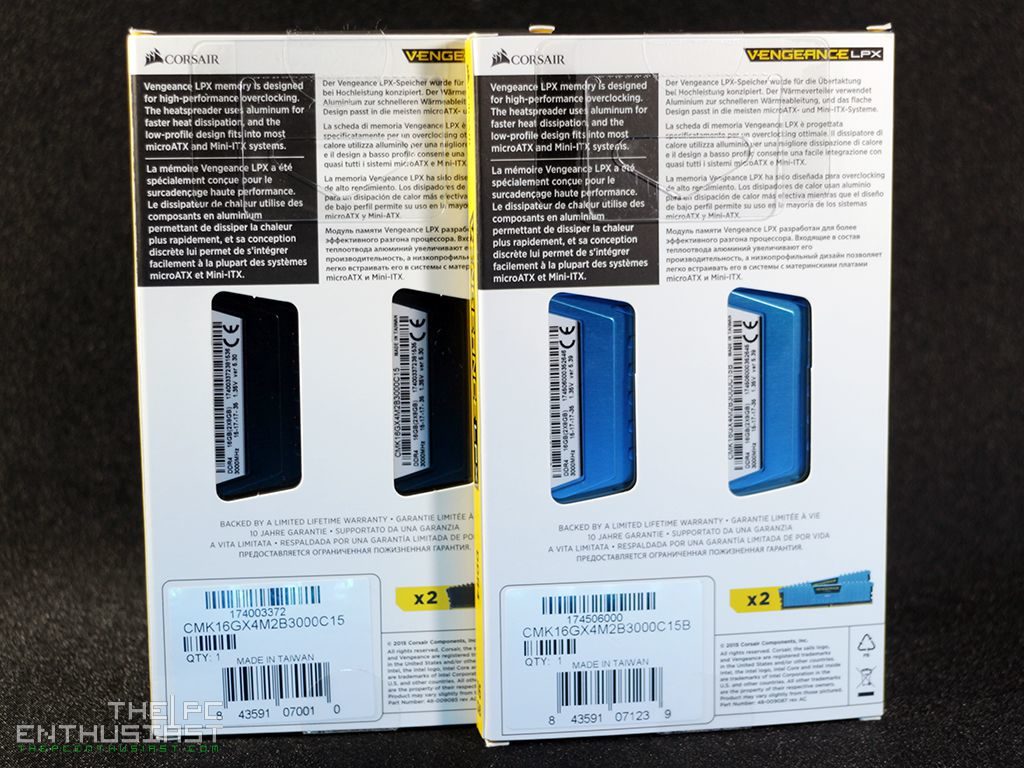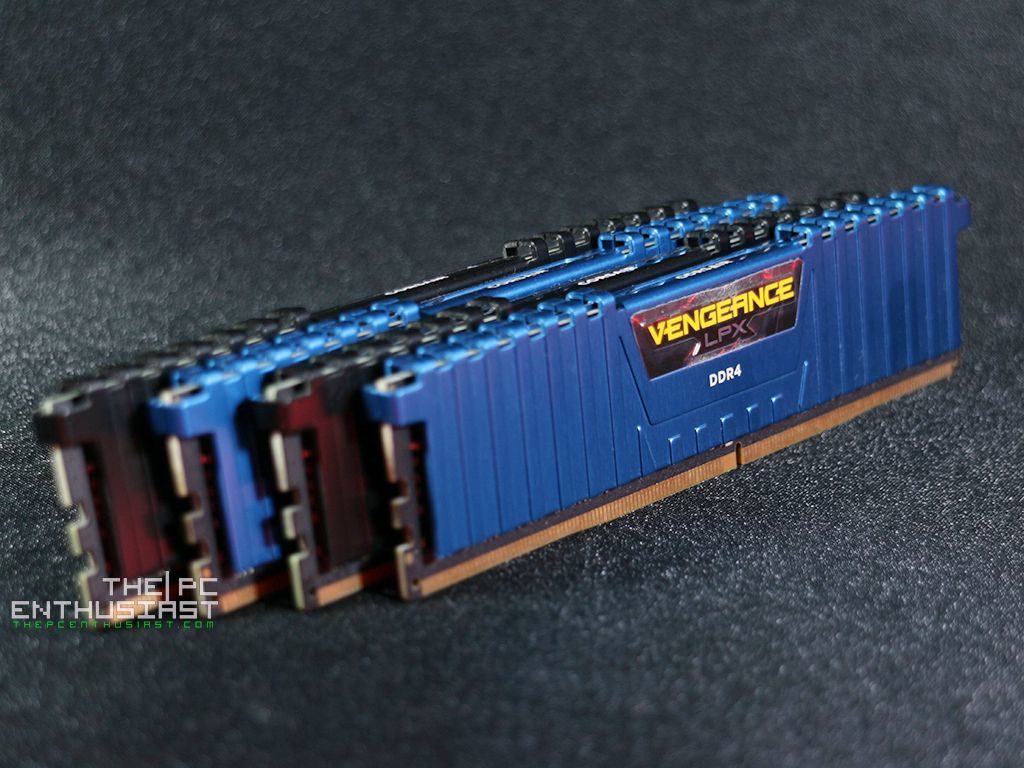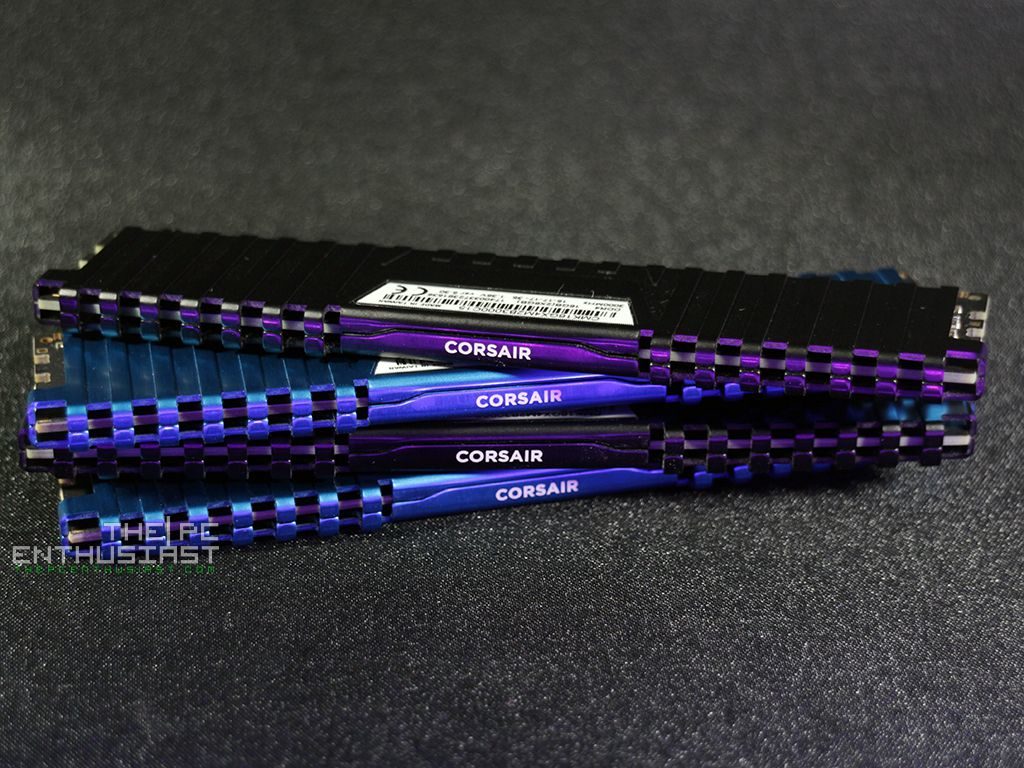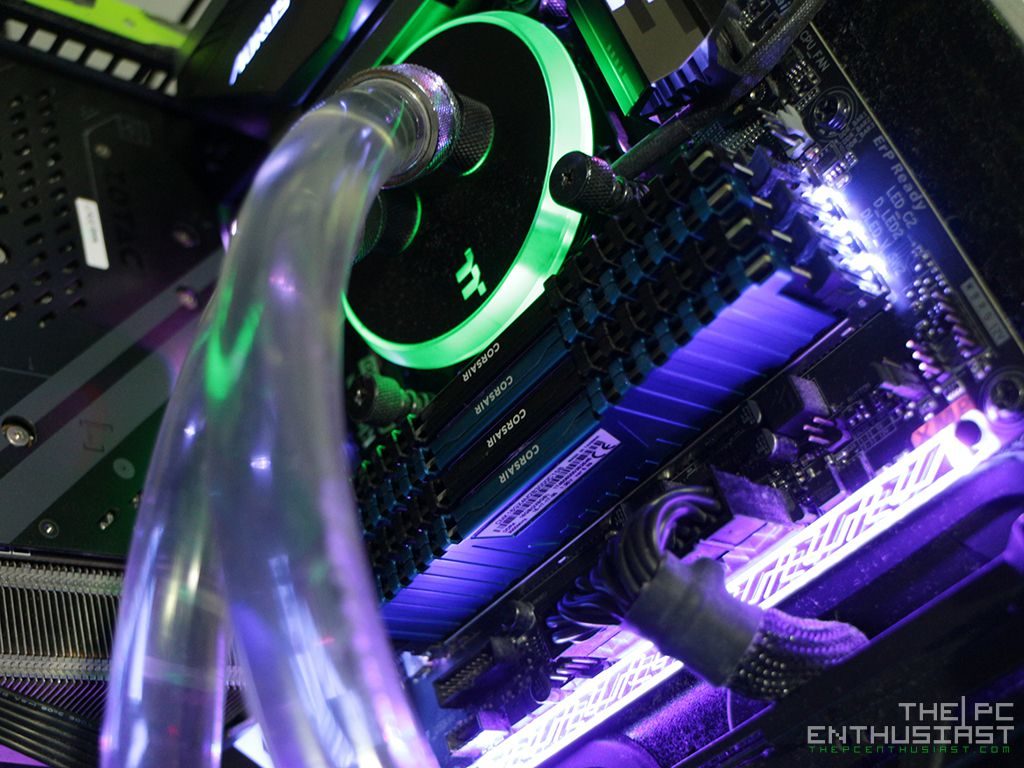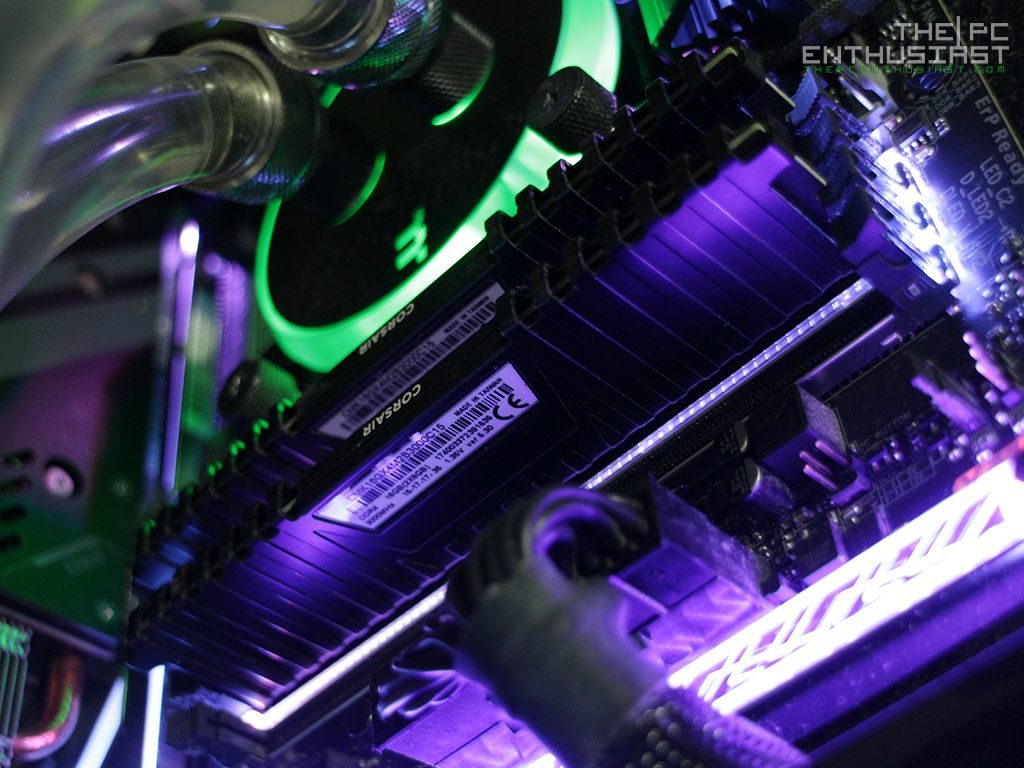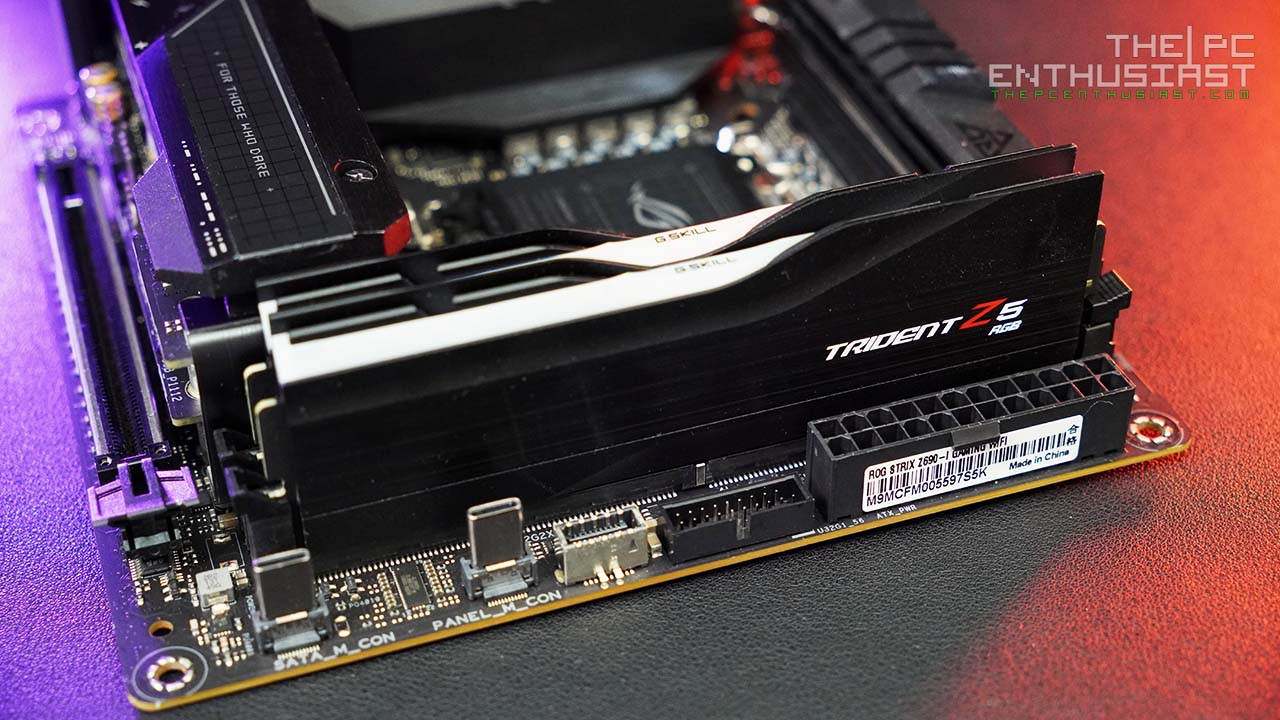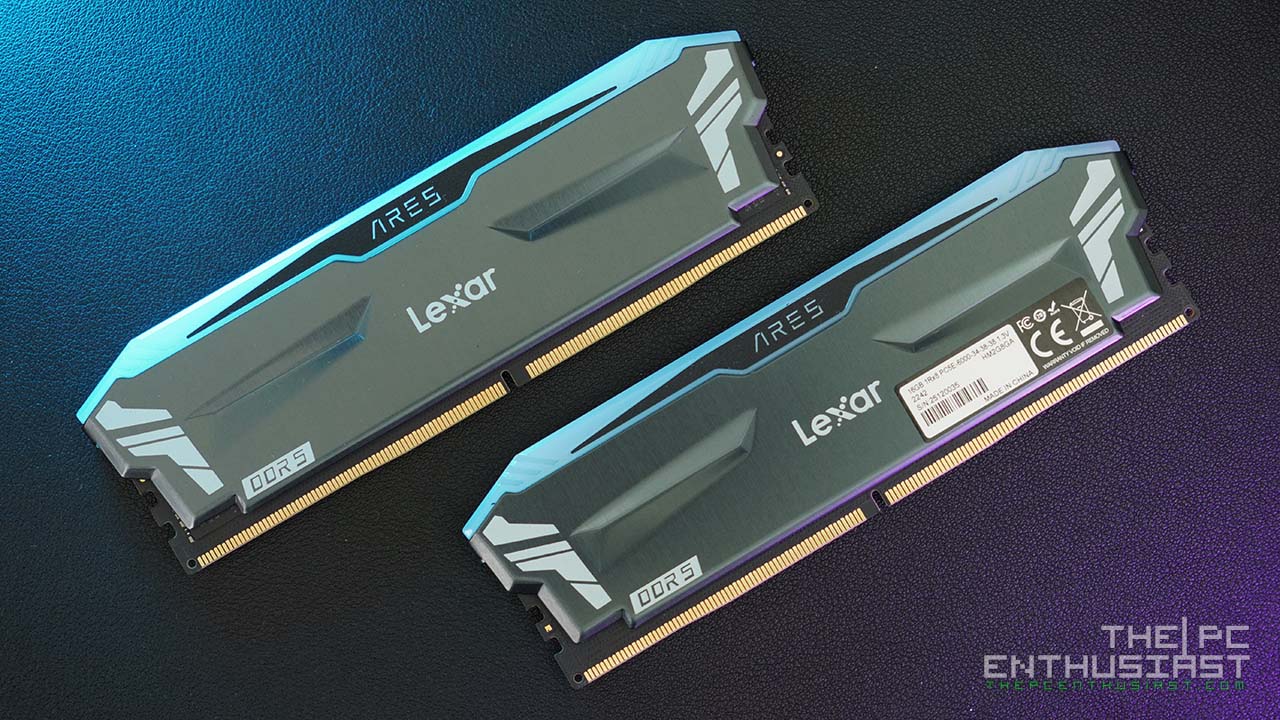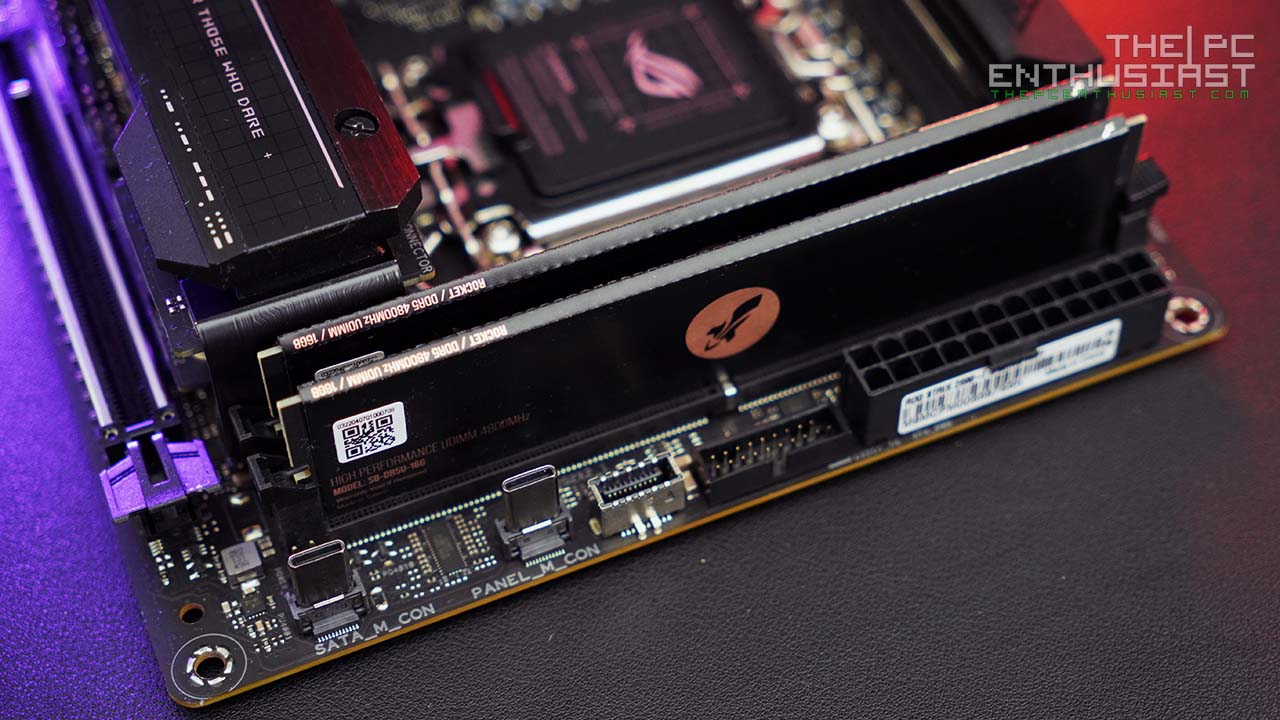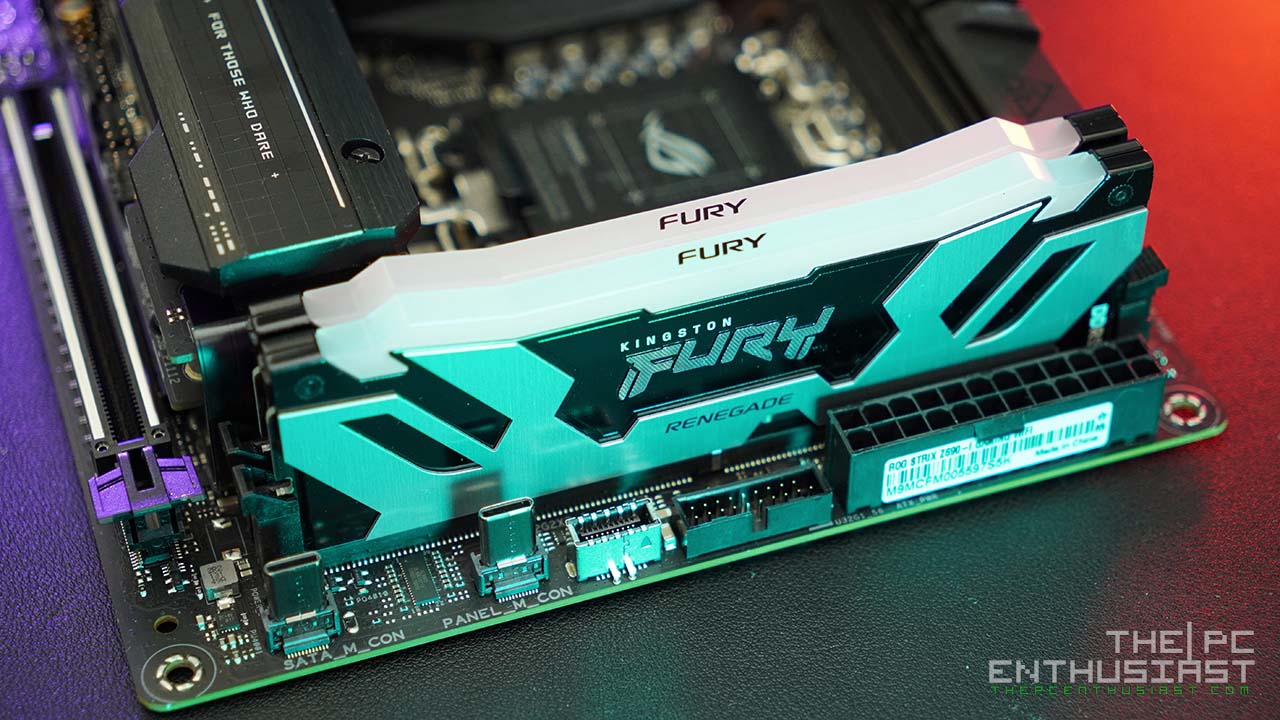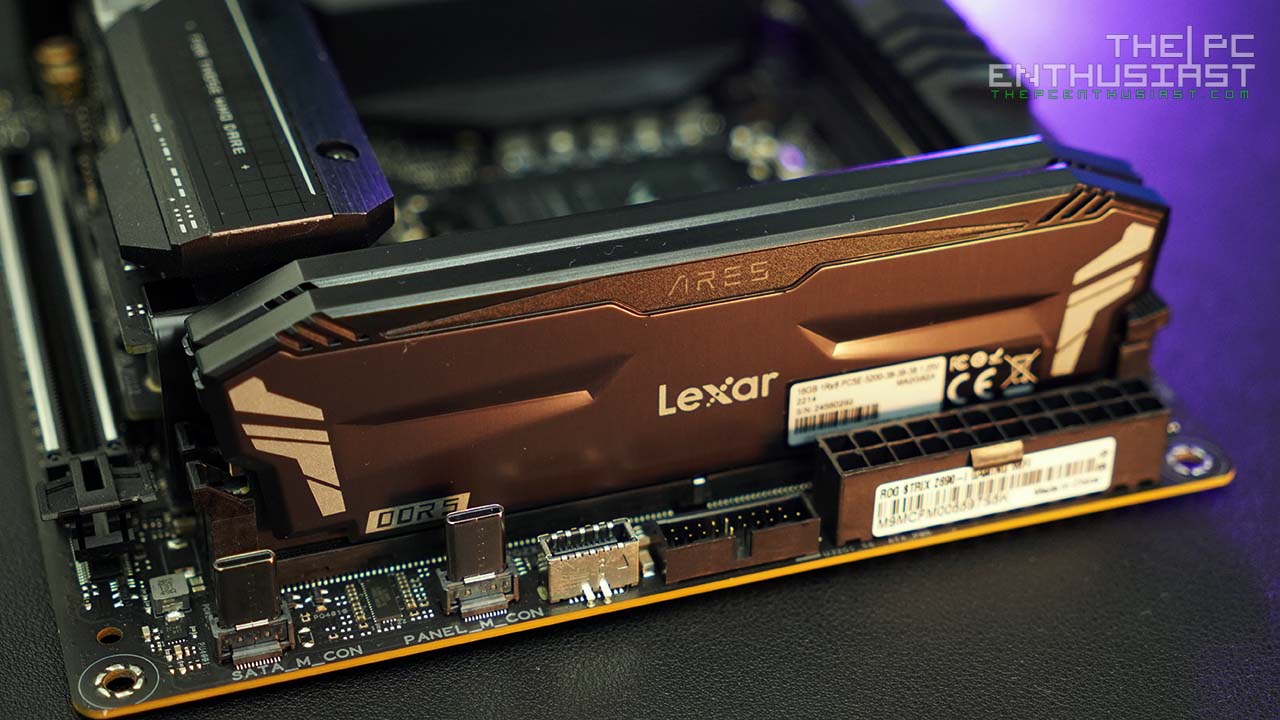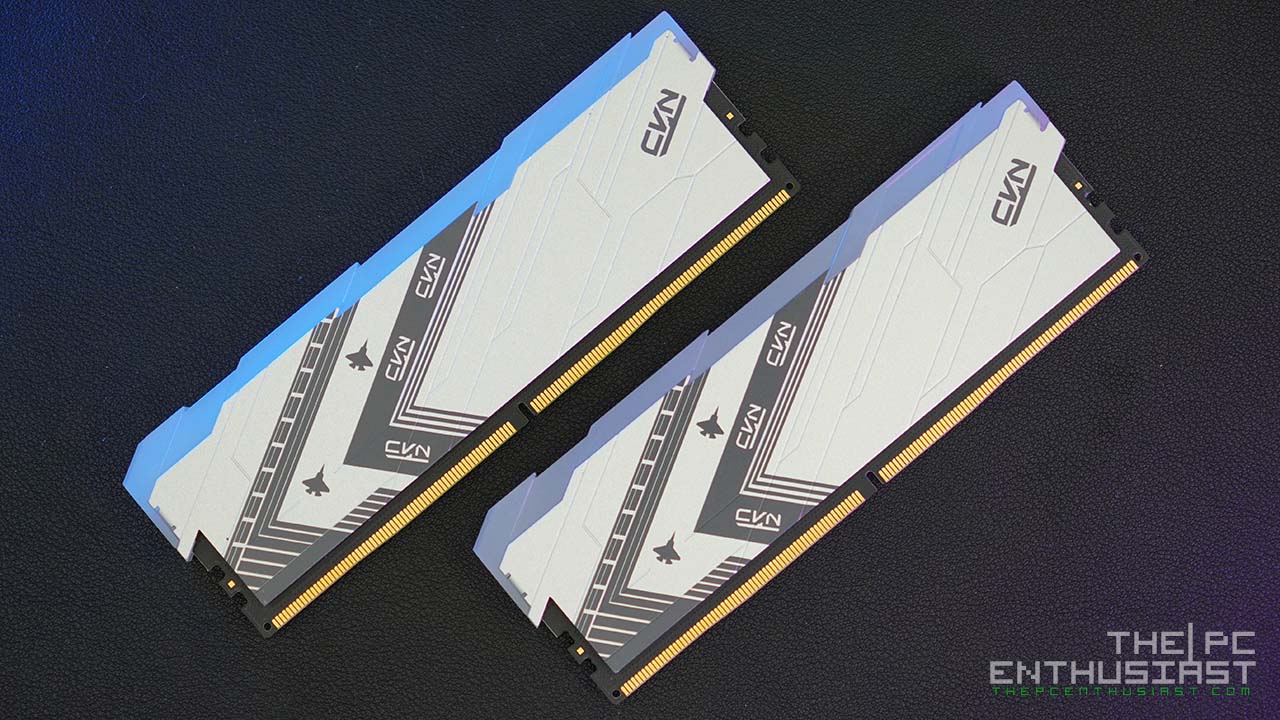The Corsair Vengeance LPX DDR4 memory is one of the company’s main high performance DDR4 memory designed for the latest compatible Intel and AMD systems. If I am not mistaken, the Vengeance LPX DDR4 lineup has been in the market for quite some time now; starting when DDR4 memory first came into market. Today we are going to look at and review the Corsair Vengeance LPX DDR4 3000MHz CL15 memory kit. Are you in the market looking for a low-profile, no-fuss DDR4 memory that simply works out of the box, regardless if you’re building an Intel or AMD system? Please continue reading our Corsair Vengeance LPX DDR4-3000MHz review below.
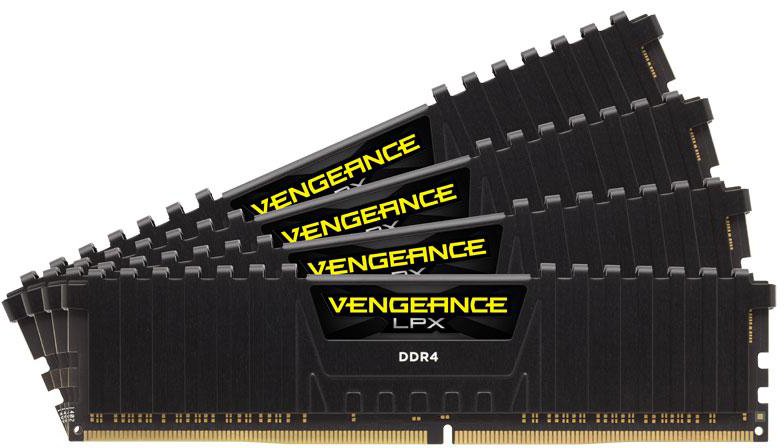
Corsair Vengeance LPX DDR4 3000MHz Memory Review
The Corsair Vengeance LPX DDR4 memory lineup is basically one of the company’s high performance memory module available. It’s not their top of the line or the highest end product; they have the Dominator Platinum series for those who wants the crème of the crop. The Vengeance LPX sits somewhere in the middle of their memory product stack. It doesn’t have any LED or RGB lighting, unlike their Vengeance LED/RGB siblings. Instead the Vengeance LPX features a low-profile aluminum heat spreader that is available in four different colors; Black, Red, White and Blue. What we have here are the Black and Blue variants.
The Corsair Vengeance LPX DDR4 memory has been tested with nearly every motherboard in the market. This means it’s basically compatible with most motherboards available in the market today, both Intel and AMD systems. In our case, we tested it with both the latest Intel Z370 and AMD X370 motherboards and the memory kits were validated and recognized without any problems at all. It also supports XMP 2.0 profile, so be sure to visit your BIOS settings and enable it to take advantage of its fastest stable speeds without manually overclocking the memory.
Aside from four different colors, the Corsair Vengeance LPX DDR4 memory kit is available in Dual Channel and Quad Channel memory configuration. You can choose from different speeds; ranging from 2133MHz up to 4400MHz, and capacities from 8GB up to 128GB (16GB per stick). Corsair is also offering a limited lifetime warranty on their Vengeance LPX DDR4 memory. More details from the specifications table below.
Corsair Vengeance LPX DDR4 Specifications
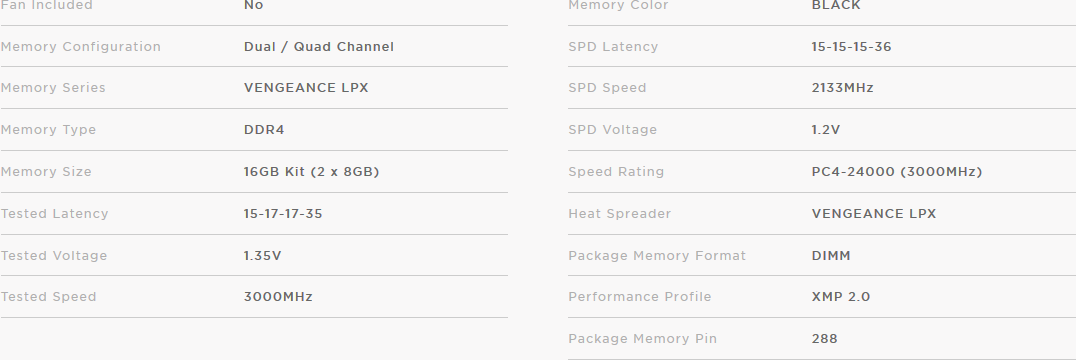
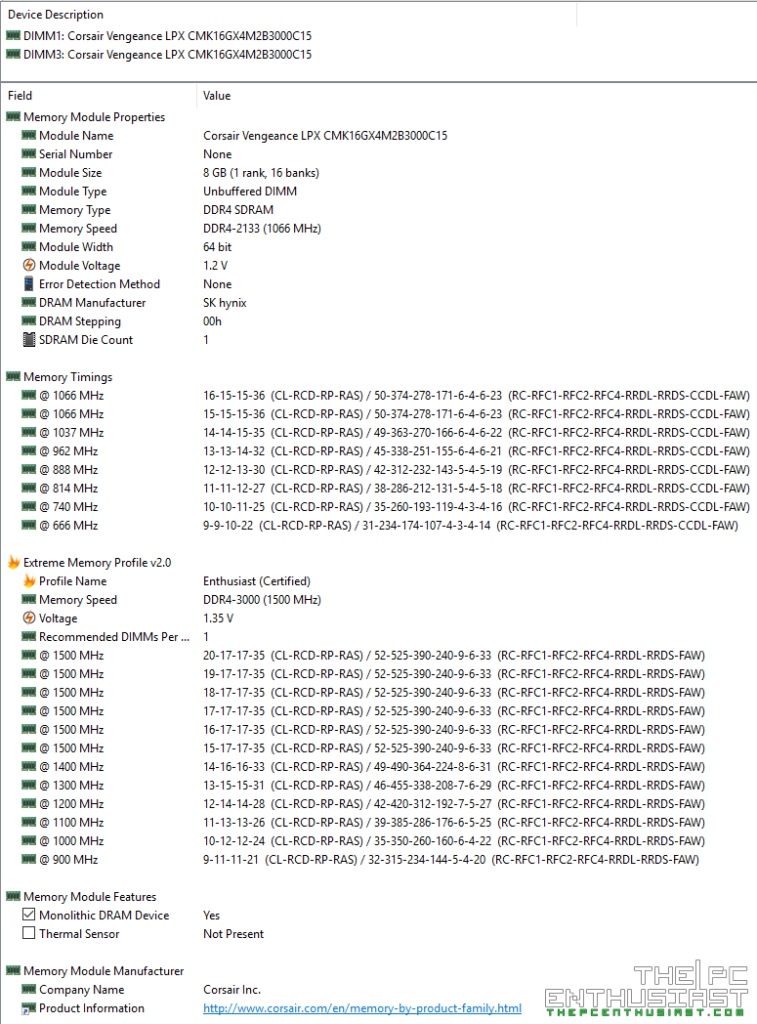
Corsair Vengeance LPX DDR4 Memory latest pricing and availability:
For US: available at Amazon.com or Newegg.com here
For UK: available at Amazon UK here
Packaging and Closer Look
Corsair has been using the same color scheme on their products’ packaging – Black or Black/White with Yellow highlights. It’s a simple packaging design and this one is a little bit slimmer since the Vengeance LPX is a low-profile memory kit and doesn’t (really) need a larger packaging or box. You can see the size and speed on the upper-right hand corner at the front portion of the box; meanwhile you can check out some of its features and information at the back portion and through the window on the middle portion.
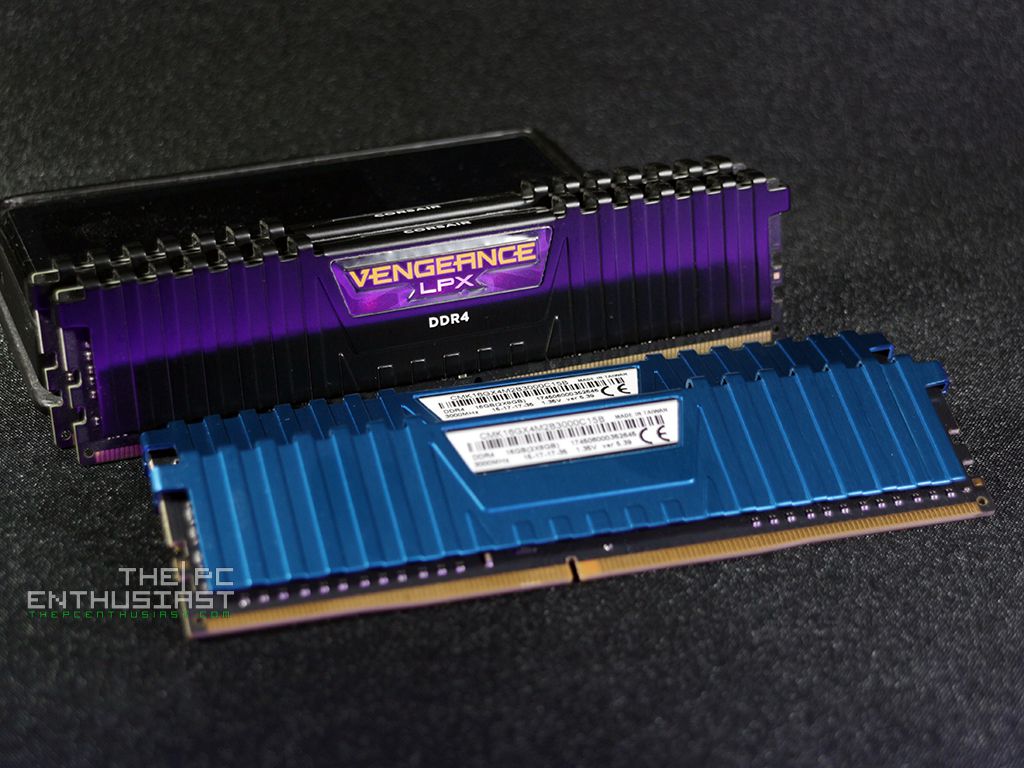
Above you can see the front and rear view of the Vengeance LPX’s heat spreader. The heat spreader has a ribbed symmetrical design; the front side bearing the Vengeance LPX DDR4 name and on the other side information and details regarding the memory stick. Information such as serial number or product number, memory type, capacity, speed, timings, voltage and version are all printed on the sticker.
We only have the black and blue variants, we’re missing the red and white ones. But basically the design is just the same, only the heat spreader’s color differ to suite your system’s color scheme. Black seems to be the safest color as it would blend well regardless of your system’s color scheme.
Obviously, the Corsair Vengeance LPX DDR4 memory kits doesn’t have any LED or RGB lighting; just Cosair’s name on the top-mid section. Below are photos of the Vengeance LPX kit installed on our test system. The first one, we have installed all four-sticks in an alternate pattern, and on the second photo is a two-stick setup. The Aorus Z370 Gaming 5 didn’t have any problem validating the DDR4 memory; regardless of the number of sticks installed or the order it was installed.
Corsair Vengeance LPX DDR4 Test Setup
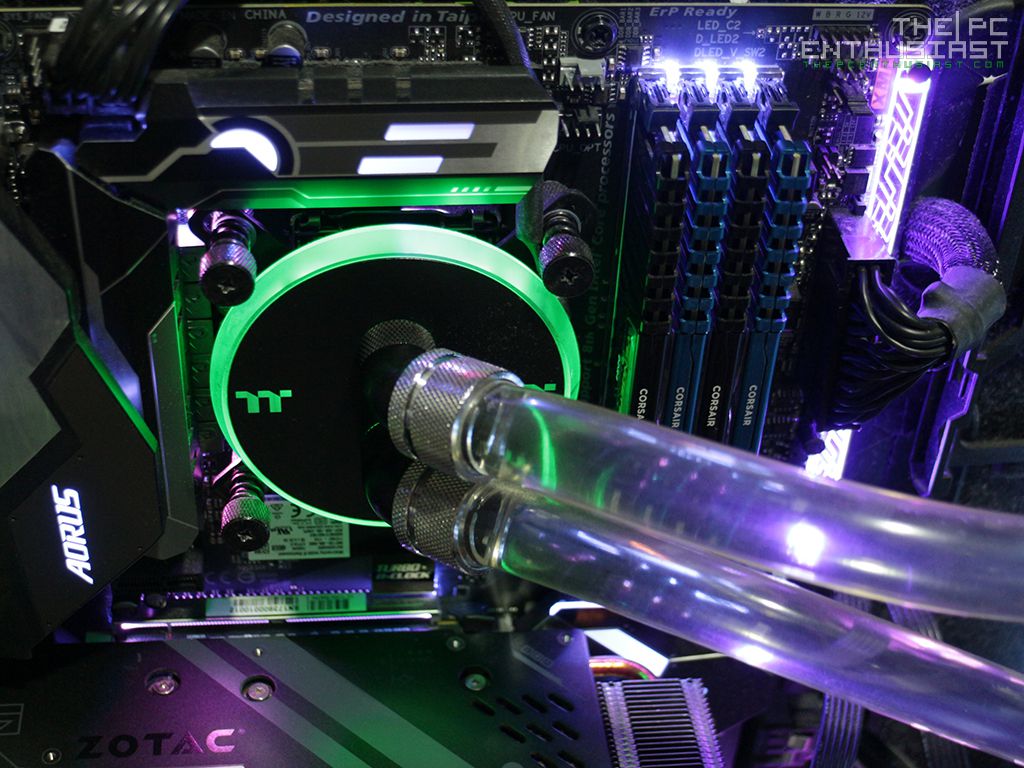
In testing the Corsair Vengeance LPX DDR4 3000MHz memory kit, I am using the Aorus Z370 Gaming 5 motherboard powered with an Intel Core i7-8700K CPU. Below are the rest of the system specifications:
Operating System: Windows 10 Pro 64bit
Motherboard: Aorus Z370 Gaming 5
Processor: Intel Core i7-8700K
CPU Cooler: Thermaltake Pacific RL360 WCS Kit
Memory: Corsair Vengeance LPX DDR4-3000MHz 16GB
Graphics card: Zotac GeForce GTX 1070 Ti Mini
OS Drive: Kingston KC1000 480GB M.2 NVMe SSD
Power Supply: Seasonic 850W Prime Titanium
Chassis: Thermaltake Core P5
Here is a CPU-Z screenshot of the Z370 system where the memory is configured using its Intel XMP Profile.
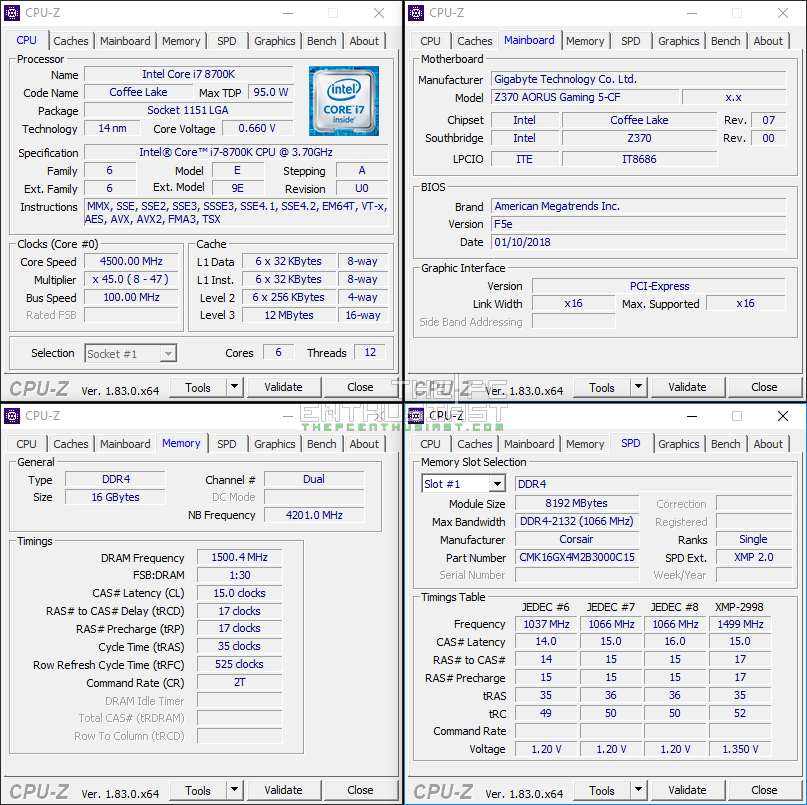
Now let’s see the Corsair Vengeance LPX DDR4’s benchmark results running at 3000MHz CL15 at 1.35V, using its default XMP 2.0 profile.
Corsair Vengeance LPX DDR4 3000MHz Benchmark Results
In testing the Corsair Vengeance LPX DDR4 3000MHz memory kit, I used some of the popular benchmarking tools available, namely: AIDA64 Memory Benchmark, SiSoft Sandra and RealBench 2.4.
Note that the other memory kits shown on the graphs below (except for the Patriot Viper LED DDR4-3200) were tested on a different and older system – Gigabyte Z170 Gaming 7 with an Intel Core i7-6700K.
AIDA64 Engineer
Memory bandwidth benchmarks (Memory Read, Memory Write, Memory Copy) measure the maximum achievable memory data transfer bandwidth. The code behind these benchmark methods are written in Assembly and they are extremely optimized for every popular AMD, Intel and VIA processor core variants by utilizing the appropriate x86/x64, x87, MMX, MMX+, 3DNow!, SSE, SSE2, SSE4.1, AVX, and AVX2 instruction set extension.
The Memory Latency benchmark measures the typical delay when the CPU reads data from system memory. Memory latency time means the penalty measured from the issuing of the read command until the data arrives to the integer registers of the CPU.
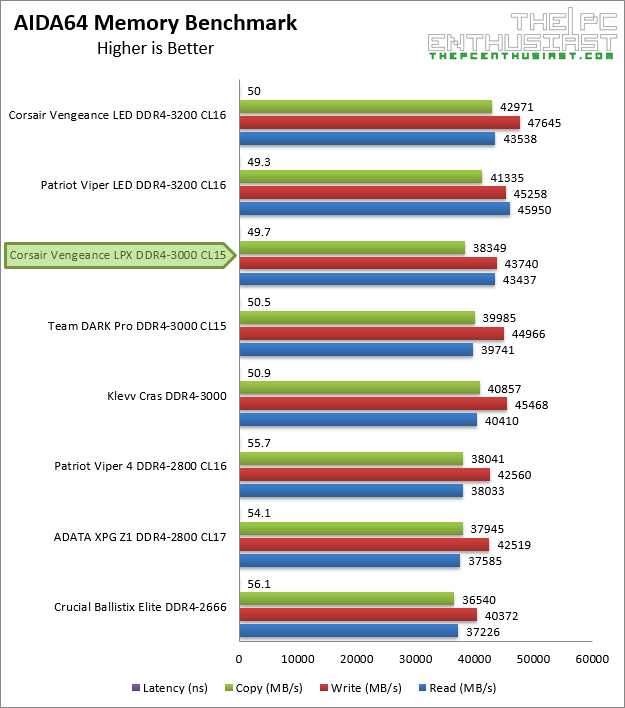
As you can see from the results above, the Vengeance LPX DDR4-3000’s performance is on par with other 3000MHz memory kit. Only a much faster 3200MHz memory kit would be able to beat its performance in this test.
RealBench 2.4
Realbench is a benchmark that uses open source applications and simple scripting to simulate real-world performance of a PC system. It’s designed for to show the difference: Before and after a PC upgrade. To gauge the real effect of an overclock.
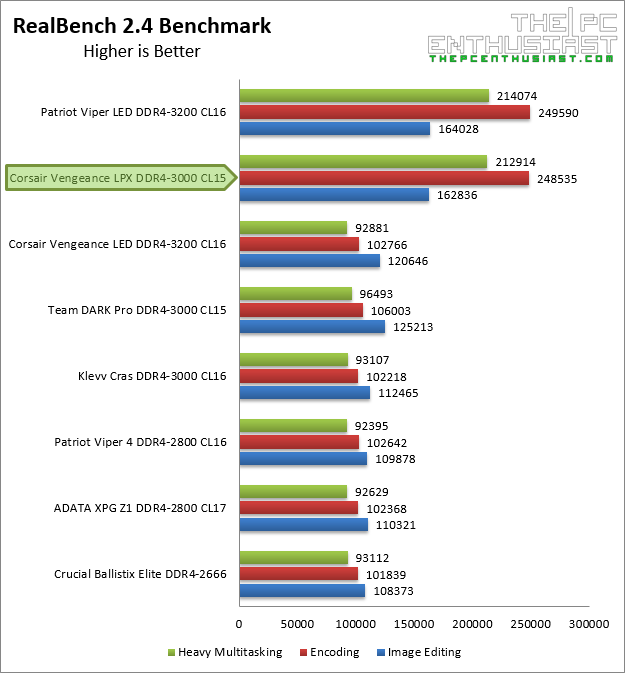
Again, in RealBench 2.4, only a 3200MHz memory kit would outperform the Vengeance LPX DDR4-3000MHz. But notice that the performance difference is very little, almost insignificant and mostly unnoticeable at all. Also, notice that there is a huge performance increase from the older Z170 + i7-6700K setup to the Z370 + i7-8700K setup. The performance difference is mostly due to the fact that the newer i7-8700K Coffee Lake processor is faster than its predecessor.
SiSoftware Sandra Lite 2016
SiSoftware Sandra is a 32- and 64-bit client/server Windows system analyzer that includes benchmarking, testing and listing modules. It tries to go beyond other utilities to show you more of what is really going on under the hood so you draw comparisons at both a high and low-level in a single product. You can get information about the CPU, GPGPU, chipset, video adapter (GPU), ports, printers, sound card, memory, network, Windows internals even .NET and Java.
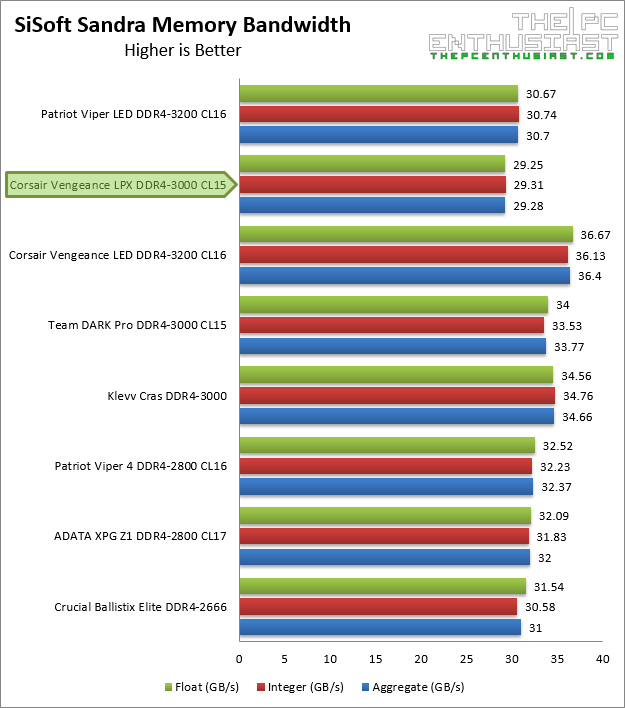
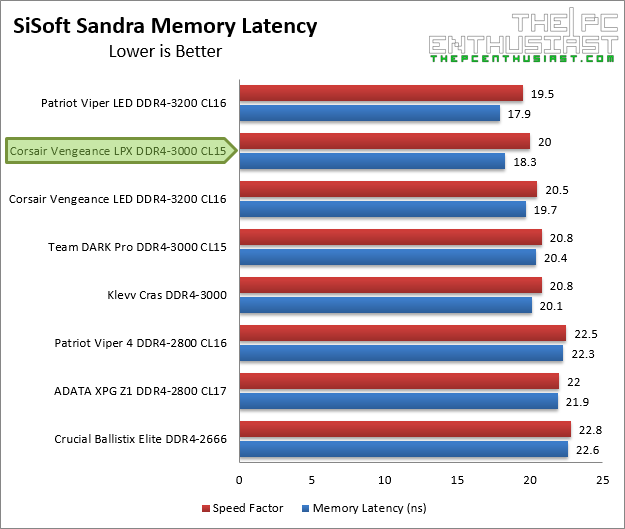
The only thing that got me puzzled in this series of tests is the result I got with the SiSoft Memory Bandwidth. The Viper LED 3200MHz memory kit is faster than the Vengeance LPX 3000MHz, but notice that the other memory kits tested on the older system got higher scores compared to the two memory kits tested on the newer system. My guess is probably it was a different or older Sisoft Sandra version, or it could be something else. Regardless, on the Memory Latency test we see that the 3000MHz was just performing as expected, slightly slower than the 3200MHz memory kit.
Price and Availability
The Corsair Vengeance LPX DDR4 memory kit is now available and has been in the market for quite some time actually. This particular kit DDR4-3000MHz 16GB (2x8GB) currently retails for around $190 to $200 USD. The Vengeance LPX DDR4 is available from 4GB capacity up to 128GB capacity, and speeds from 2133MHz up to 4400+MHz. The higher the capacity and the faster the speed is, the more expensive the memory kit gets. It is available in four different colors; Black, White, Red and Blue. Corsair is also offering a limited lifetime warranty for their Vengeance LPX DDR4 memory kits. Due to the fluctuation of NAND chips / memory chips supply; prices of DDR4 memory are affected. You can check the links below for the latest pricing and availability.
Corsair Vengeance LPX DDR4 Memory latest pricing and availability:
For US: available at Amazon.com or Newegg.com here
For UK: available at Amazon UK here

Corsair Vengeance LPX DDR4 3000MHz Review: Conclusion
There’s no question when it comes to the Corsair Vengeance LPX DDR4’s performance and capability. It simply works right out of the box regardless of what system you use it with. It did perform as expected and right on par with other 3000MHz memory kit. Obviously, only a much faster memory kit can outperform it. Reliability and stability are also key factors in deciding which memory kit you should get; and I am happy to report that I didn’t encounter any problems with this particular memory kit.
There are some memory kits in the market that doesn’t get validated right away; as a result you are stuck in a POST loop and your system will not boot up, even if XMP is not enabled. Sometimes, it may take several restarts before the motherboard validates the memory. This is not the case with the Corsair Vengeance LPX. It gets validated right away, both on AMD’s X370 and Intel’s Z370 motherboards and I didn’t encounter any problems enabling its XMP 2.0 profile as well.
In terms of build quality and design, there’s no doubt that the Vengeance LPX is made from selected and high quality memory ICs and materials. Aesthetics is mostly of personal preference but generally speaking the design will most likely blend well regardless of the system’s design or mod.
The question now is, what memory speed and capacity should you buy? Should you get an 8GB, 16GB or 32GB capacity? Should you get a 3000MHz or the faster 3200MHz or a slower 2400MHz-2666MHz memory kit?
Most system builders and gamers nowadays usually would opt for a 3000MHz or 32000MHz memory speed. Although you may see (significant) performance difference based on the numbers from the benchmark scores you see on reviews; in real life scenario you can hardly tell the difference between these memory kits at all (without looking at the numbers of course). During normal desktop operation or gaming, you may not even feel or observe the difference at all. Probably if you are running a specialized software or application that requires a fast memory speed; only then can you fully utilize or maximize the faster memory kit’s potential. But if you’re just a casual desktop user or casual gamer, you may want to opt for 3000MHz or below speed, and save a few bucks; not unless you’re in for the bragging rights.
As for memory capacity, 8GB is pretty much the minimum these days. Most modern day applications or AAA games would require you to have at least 16GB of memory capacity. However, if you are into (heavy) multi-tasking, content creation, video editing, large-sized photo editing, server or workstation use, and other tasks that require large memory capacity; you may want to get at least 32GB for a smooth operation.
Just always remember, if you plan to buy a 3000MHz kit or anything faster than the stock DDR4 memory speed, be sure to enable its XMP 2.0 profile. Otherwise it would not run at 3000MHz, and it would only run at stock 2133MHz speed.
Finally, you simply can’t go wrong with the Corsair Vengeance LPX DDR4 memory kit. It’s a solid performing and well-made memory kit and it wouldn’t disappoint in terms of performance and reliability. If you are looking for a low-profile non-lit DDR4 memory, you should consider the Corsair Vengeance LPX series on your top list.


